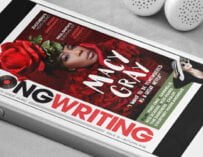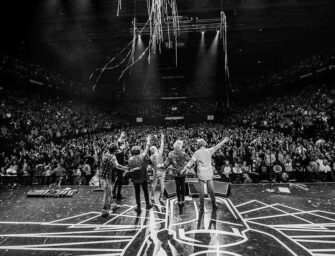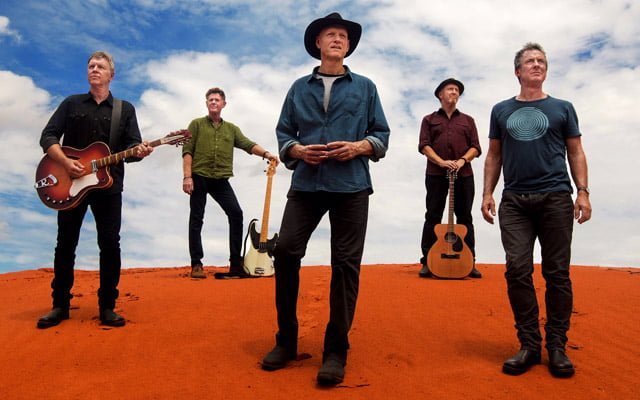
Lisa Redford plans to crowdfund her next release
After a few months’ break, our regular columnist Lisa is back, and sharing some thoughts on crowdfunding your next release
![]() s an independent singer/songwriter, self-funding and promoting an album and EP has been a costly business in the past, so for my next release I’ve been considering the crowdfunding route. It’s something I’ve not embarked upon before, but it’s become increasing popular over the last few years, providing a way of engaging with your loyal fanbase (and an opportunity to gain new fans) as they actively participate in a project: not only releases but also upcoming tours, music videos and so on. In return, artists offer a variety of rewards such exclusives, experiences and signed merchandise, depending on the amounts of money pledged.
s an independent singer/songwriter, self-funding and promoting an album and EP has been a costly business in the past, so for my next release I’ve been considering the crowdfunding route. It’s something I’ve not embarked upon before, but it’s become increasing popular over the last few years, providing a way of engaging with your loyal fanbase (and an opportunity to gain new fans) as they actively participate in a project: not only releases but also upcoming tours, music videos and so on. In return, artists offer a variety of rewards such exclusives, experiences and signed merchandise, depending on the amounts of money pledged.
Through sites such as Kickstarter, PledgeMusic and Indiegogo, fans can feel part of a project by investing in it. With little financial support available for artists in the current climate, many have turned to crowdfunding. Not only could it help your music get noticed, many feel there’s also a real sense of connection made. Amanda Palmer raised $1.2 million from 24,883 backers in 2012 for a new album. A well-known advocate of crowdfunding, her TED talk The Art Of Asking asserts that by asking, you’re actually giving someone the gift of access, connection, and trust. Many musician friends of mine have crowdfunded projects, as have established artists such as Linda Thompson, Ellis Paul, Ben Folds Five, Erin McKeown and countless more. So if you’re a ‘newbie’ like myself to fan-funded music, here are some key things to consider.
“Your loyal fanbase really is invaluable”
Before starting, do your research to discover what and who has been successful and decide on your project and platform. I’m thinking of an EP and have found excellent advice online from artists who’ve gone through the process themselves. I’d also recommend looking closely at what each platform offers. Kickstarter attracts artists for its reputation and sheer volume of new traffic to the site: people actively look for projects there. PledgeMusic emphasize the distinction between funding and process: by looking at your music career, such as the size of your email list and social media presence, they aim to keep your fans invested long after the campaign. Indiegogo has been touted as being very easy to use and also has a ‘flexible funding’ policy, where even if you don’t reach your target, you still receive whatever is donated so far. There are others out there, so keep an eye out on current updates and find what suits you.
For people to connect with your story and passion for your project, much is mentioned of how important creating a video is. Your loyal fanbase really is invaluable, those who have followed your career and love what you do, and communicating to them on a personal level will help them understand your aims and want to engage in your campaign. Talking about the story behind your project, explaining why you need support, mentioning the rewards and being clear about the reasons why they would want to help you, really pushes crowdfunding campaigns. Something fun and inventive that allows your personality to shine through will help the video make an impact.
On to rewards or perks, and here’s where you can get really creative with what you’re offering. Think about what your fans would love to receive from you and offer items and experiences across a wide price range so they appeal to pledgers’ various budgets. Items can range from digital downloads to merchandise; signed pre-release CDs, vinyl, handwritten lyric sheets, signed set lists, posters, t-shirts to backstage passes, including a pledgers’ names in the album credits, instruments, a lunch date, Skype lessons, even a private house concert.
“Josh Rouse’s rewards included an offer to come to his studio”
Looking at past campaigns, several songwriters I admire have made rewards special and personal to their fan base. Martin Rossiter included the coat he wore during his ex-band Gene’s only Top Of The Pops appearance. Josh Rouse’s rewards included an offer to come to his studio for a recording session, artwork from an artist who designed one of his previous releases, a private solo house show and an eight-track reel- to-reel machine used to record early material. Via Kickstarter, Griffin House even offered to perform a song at a fan’s event or wedding. Ensure that you price your exclusives appropriately and can follow through, keeping in mind postage and shipping costs, in particular for international orders.
Engaging through social media has become an essential promotional tool for artists these days and should also be used to promote your crowdfunding campaign. As your campaign is launched, interact with your social media fans and contacts, publicly responding to them so your project shows up in various feeds. Organise any artwork so it’s all in place such as Facebook profile pictures and banners, Bandcamp banners, YouTube channel, website artwork, anywhere you can create awareness. You can use sites such as Tumblr or WordPress to create blog posts, and if you’re already in the studio to record you can post footage and photos to Instagram as well as upload demos to SoundCloud. Use all the tools and sites available, be pro active in keeping everyone updated and of course utilise that all-important e-mail list.
“It’s not advisable to launch your campaign and then sit back”
I’ve been hesitant in the past of doing a campaign, due to a fear of failing and not knowing how much to spread the word, so it’s really important to get into the right mindset. Keep in mind that it’s exciting to your fans that you’re doing something new and getting them involved in the process. Advice online emphasizes that the beginning of the campaign is an essential period to capitalise on interest. It’s not advisable to launch your campaign and then sit back waiting to see what happens: try to generate and maintain momentum throughout, adding more exclusives and updates. Personally thanking people and conveying appreciation to your fans goes a long way, and after a campaign ends don’t just disappear and forget those who helped – keep them updated on all your activities.
The music industry is constantly changing and so are the ways that musicians can market and fund their music. Crowdfunding has become an integral part of this marketing for artists both emerging and established. Being fully prepared and pro-active, communicating and keeping fans updated, finding creative ways to keep momentum going while following through with your rewards will all aid a successful campaign.
I’ve just skimmed the surface here and would love to hear your experiences of crowdfunding, good and bad. I’d especially love to hear what interesting rewards you offered. Maybe now it’s time to dig out those tour posters and t-shirts and get started!
Regular Songwriting columnist Lisa Redford has been described by BBC Radio 2′s Bob Harris as “one of our finest singer/songwriters.” She has earned acclaim for her heartfelt acoustic music with gorgeous melodies and soulful vocals. For more information, visit Lisa’s website, or find her on Twitter, Facebook, YouTube, Reverbnation or Bandcamp.

































Related Articles